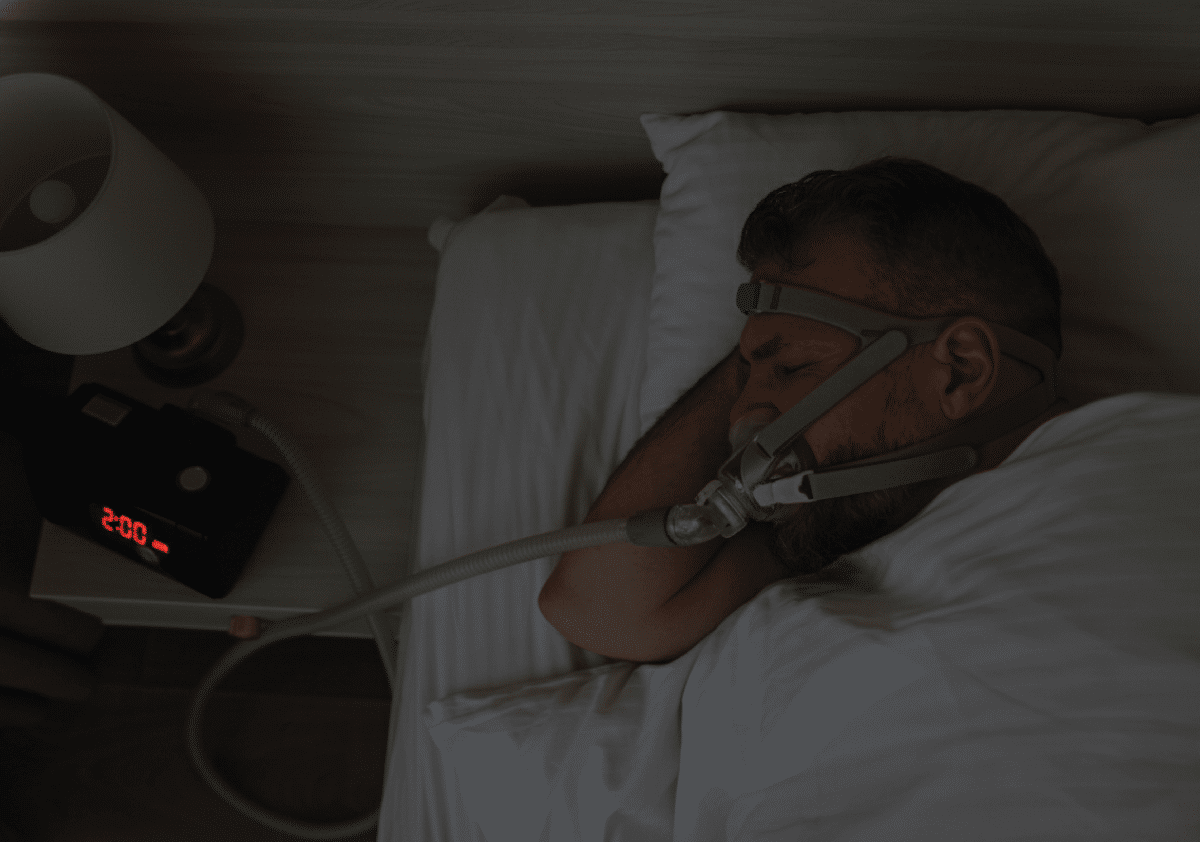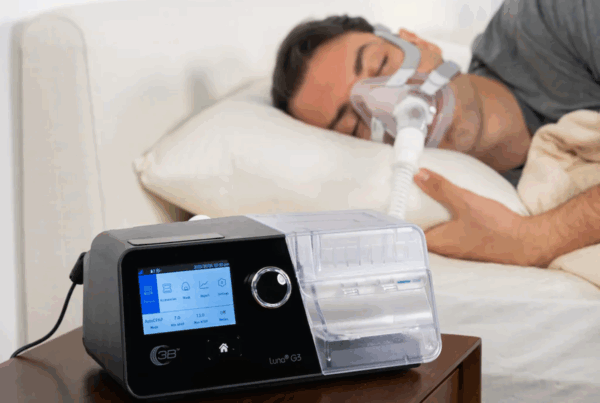A Subtle Shift That Impacts Sleep
When the clocks change for Daylight Saving Time—whether we “spring forward” or “fall back”—your body’s circadian rhythm must readjust. Even a one-hour shift can disrupt natural sleep patterns, making it harder to fall asleep, stay asleep, and feel rested.
Why CPAP Users Notice the Difference
For people using CPAP therapy to manage obstructive sleep apnea (OSA), this time shift can cause measurable effects. Studies show that transitions in daylight saving time can reduce nightly CPAP usage and increase fatigue during adjustment periods (Source: Sleep Medicine Journal). Disrupted sleep timing can also affect mask comfort, air pressure consistency, and compliance data.
How to Stay Consistent
- Stick to your usual bedtime and wake time.
- Use your ResMed AirSense 10, AirSense 11, or React Health CPAP machine as normal each night.
- Review your nightly usage hours, AHI score, and leak rate for the first week after the time change.
Expert Tip from Alpine Home Medical
At Alpine Home Medical, we see the most successful CPAP users keep their sleep schedule steady and monitor therapy data closely after each time change. A small adjustment before the switch—and consistent nightly use afterward—helps maintain compliance and better sleep quality all year long.
CPAP and Daylight Saving Time: What You Need to Know
At Alpine Home Medical, we help CPAP users choose and use the right machine — from the ResMed AirSense 10 and AirSense 11 to the React Health machine.
When daylight saving time changes, even one hour can affect your sleep, comfort, and therapy compliance. This guide explains what happens, how to stay consistent, and which CPAP machines handle the transition best.
How the Time Change Affects Sleep Apnea and CPAP Therapy
Disruption of Your Body Clock
When the clocks move forward or backward, your circadian rhythm your body’s internal clock, can fall out of sync.
For people with obstructive sleep apnea (OSA), this shift may cause:
- More awakenings during the night
- Increased daytime tiredness or poor concentration
- Temporary changes in airway stability and sleep quality
Even a one-hour difference can change how rested you feel and how well your CPAP therapy works.
Impact on CPAP Usage and Compliance
Time changes can reduce nightly CPAP usage hours.
One study of OSA patients found a drop in machine use right after daylight saving time began. Consistent bedtime routines and therapy hours are proven to improve long-term CPAP compliance and AHI (Apnea-Hypopnea Index) scores.
Bottom line: If your nightly use decreases, your therapy effectiveness drops too. Keeping a regular routine during daylight saving transitions helps your treatment stay on track.
Machine Clock Settings and Data Accuracy
Most ResMed and React Health machines adjust automatically or continue recording accurate therapy data, even if the clock isn’t changed manually.
Still, it’s smart to check that your device timestamp matches your local time, especially if you review reports or share data with your provider.
Older CPAP models may need a manual time adjustment a quick step that helps keep your compliance data aligned.
CPAP Machine Comparison for Time-Change Transitions
ResMed AirSense 10
A trusted, proven device for reliable CPAP therapy. ResMed AirSense 10 has been a favorite for years.
Features include:
- Auto-adjusting pressure
- Integrated humidifier
- Easy-to-use design
It’s a solid option for users who already have it and are comfortable with its setup.
ResMed AirSense 11
Designed for modern sleep routines and flexibility during seasonal or travel changes. ResMed Airsense 11 has features you can count on.
Key upgrades:
- Touchscreen display with guided setup
- Wireless connectivity for automatic data sync
- Enhanced comfort features like Expiratory Pressure Relief and improved humidification
These tools help maintain therapy consistency when your schedule shifts.
React Health Machine
The React machine is another strong choice for users needing detailed compliance monitoring.
- It allows easy access to usage data and integrates well with provider reporting systems.
- For those focusing on tracking, React offers reliable insight into nightly performance and therapy consistency.
Choosing the Right CPAP for Daylight Saving Time
Stay with AirSense 10 if it’s working well and feels comfortable.
Upgrade to AirSense 11 if you want more flexibility, modern features, and remote data access.
Use React if you need strong reporting and tracking tools.
Whichever machine you use, consistent nightly usage is the key to success, especially during time-change weeks.
How Alpine Home Medical Helps You Stay Consistent
Alpine Home Medical supports every CPAP user with personalized care to keep compliance steady through time changes and routine shifts.
Our Process
- Proactive reminders: We alert patients before daylight saving time to adjust their sleep schedules gradually.
- Data monitoring: We track usage hours, AHI, and mask leak rates through your machine’s cloud-based system.
- Comfort checks: We review mask fit, humidity levels, and dryness symptoms if your sleep feels off.
- Education and guidance: We explain how steady CPAP use reduces fatigue, improves heart health, and enhances daily focus.
Thanks to this structured, patient-focused approach, Alpine users often exceed national compliance benchmarks , even during daylight saving transitions.
Most Common Questions From Our Customers
How should I adjust my sleep schedule before the daylight saving time change?
In the days leading up to the time change, gradually shift your bedtime and wake-up time by about 15 minutes each day toward the new schedule. This small adjustment helps your internal clock align with the upcoming change.
- If you’re “falling back” (gaining an hour), start going to bed slightly earlier.
If you’re “springing forward” (losing an hour), begin winding down sooner in the evening.
This slow transition supports your body’s natural circadian rhythm and helps your CPAP therapy remain consistent during the change.
Should I do anything different with my CPAP machine when the clocks change?
Keep your CPAP routine exactly the same. Go to bed when you feel sleepy and start your therapy as soon as you lie down—don’t delay or skip a night because of the time change.
After the switch, check your machine’s clock or timestamp (found in your data report) to confirm it reflects the correct local time, especially if you share data with your provider or track results in apps like ResMed myAir or React Health’s platform.
Why is light exposure important after the time change for CPAP users?
Your exposure to light strongly influences your circadian rhythm, which directly affects sleep quality and how well your CPAP therapy works. After the time change:
- Get morning sunlight as soon as possible — this helps reset your body clock.
- Avoid bright or blue light from screens close to bedtime.
Keep your sleep environment cool, quiet, and dark.
Maintaining a consistent sleep environment ensures your CPAP pressure, mask comfort, and humidification remain effective each night.
How can I make sure my CPAP equipment stays comfortable after the time change?
It’s common to notice slight changes in sleep patterns during time shifts. If you find yourself waking up early, feeling dry, or noticing leaks, it might be time to:
- Recheck mask fit and look for leaks.
- Adjust humidifier settings to reduce dryness.
Verify tubing and filters are clean and seated properly.
If you’re using a ResMed AirSense 11, confirm you’re running the latest firmware and that your myAir app is syncing correctly. These updates help monitor your data accurately while you adjust to the new schedule.
What data should I review on my CPAP after daylight saving time?
In the week after the time change, pay attention to:
- Usage Hours: Are you still meeting your nightly goal (at least 4–7 hours)?
- AHI (Apnea–Hypopnea Index): Is your AHI still below 5?
Leak Rate: Has your mask started leaking more often?
A sudden drop in hours or an increase in AHI/leaks can signal disrupted sleep or a need for a small adjustment. Alpine Home Medical’s team can review your ResMed or React machine data to make sure everything remains optimized.
What should I do if I feel more tired or notice therapy changes after the time shift?
Feeling unusually tired, waking up more often, or noticing that your device feels “off” are common during daylight saving transitions.
If this happens:
- Review your machine data and ensure usage remains consistent.
- Double-check your equipment setup (mask, humidifier, tubing).
Reach out to your CPAP support provider, such as Alpine Home Medical, for a quick compliance review.
Early adjustments can prevent several nights of poor sleep from turning into weeks of subpar therapy.
How does Alpine Home Medical help CPAP users during time changes?
Alpine Home Medical takes a proactive approach to keeping CPAP compliance high year-round — including during daylight saving transitions. Our specialists review therapy data through ResMed AirView or React Health portals, check for leaks, track AHI trends, and guide users through setting adjustments.
We also provide educational resources and reminders to help CPAP users maintain consistent sleep schedules, comfort, and data accuracy — ensuring their sleep apnea therapy remains effective regardless of the clock.
What’s the single most important thing to remember about CPAP therapy during daylight saving time?
Consistency is everything. Whether the clocks move forward or backward, sticking to your bedtime, keeping your CPAP routine steady, and monitoring your data are the best ways to maintain effective therapy.
Your ResMed AirSense 10, AirSense 11, or React machine will keep you breathing steadily through the transition — and Alpine Home Medical will help ensure your sleep therapy stays aligned, comfortable, and compliant.














